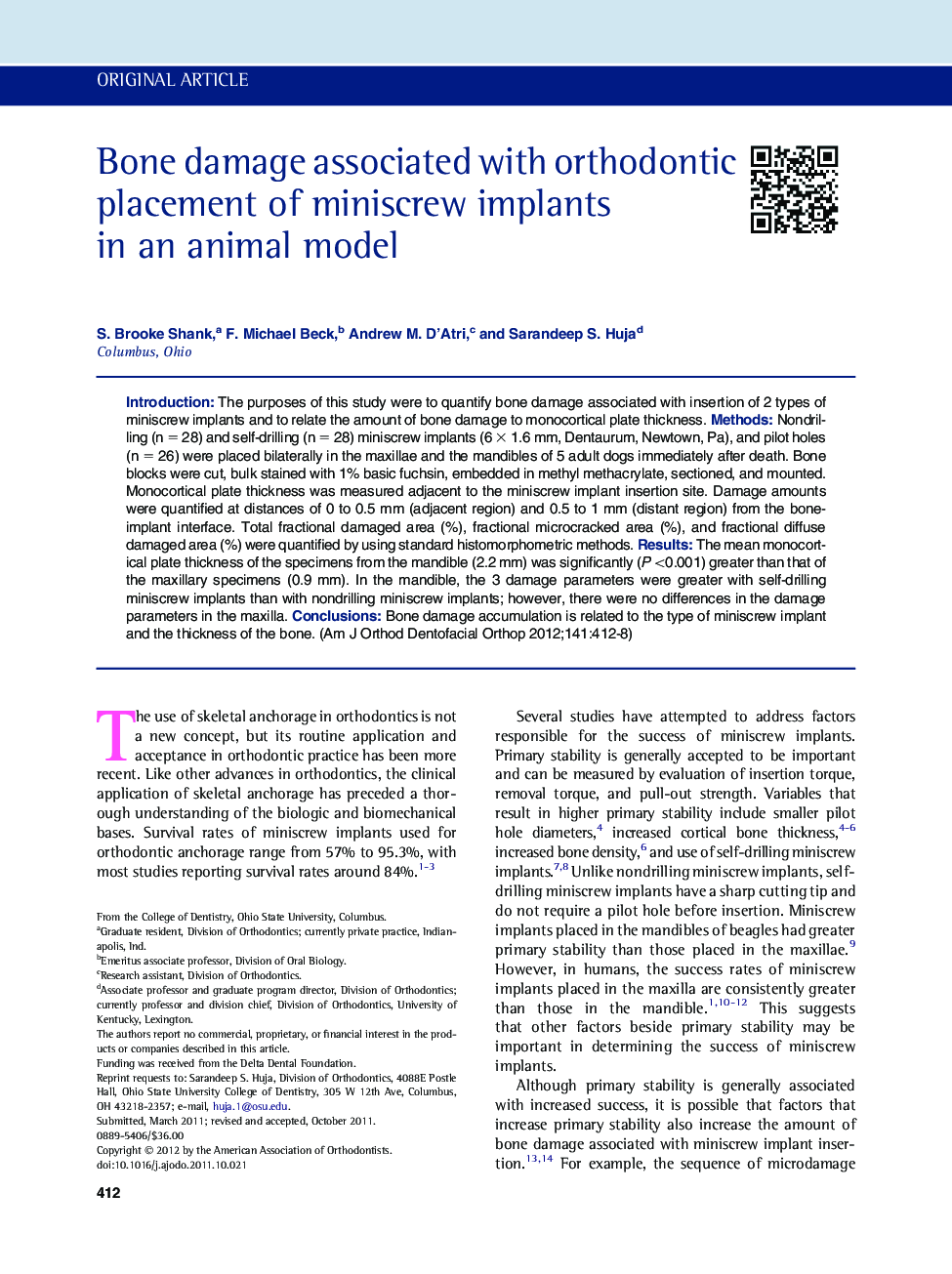| Article ID | Journal | Published Year | Pages | File Type |
|---|---|---|---|---|
| 3117419 | American Journal of Orthodontics and Dentofacial Orthopedics | 2012 | 7 Pages |
IntroductionThe purposes of this study were to quantify bone damage associated with insertion of 2 types of miniscrew implants and to relate the amount of bone damage to monocortical plate thickness.MethodsNondrilling (n = 28) and self-drilling (n = 28) miniscrew implants (6 × 1.6 mm, Dentaurum, Newtown, Pa), and pilot holes (n = 26) were placed bilaterally in the maxillae and the mandibles of 5 adult dogs immediately after death. Bone blocks were cut, bulk stained with 1% basic fuchsin, embedded in methyl methacrylate, sectioned, and mounted. Monocortical plate thickness was measured adjacent to the miniscrew implant insertion site. Damage amounts were quantified at distances of 0 to 0.5 mm (adjacent region) and 0.5 to 1 mm (distant region) from the bone-implant interface. Total fractional damaged area (%), fractional microcracked area (%), and fractional diffuse damaged area (%) were quantified by using standard histomorphometric methods.ResultsThe mean monocortical plate thickness of the specimens from the mandible (2.2 mm) was significantly (P <0.001) greater than that of the maxillary specimens (0.9 mm). In the mandible, the 3 damage parameters were greater with self-drilling miniscrew implants than with nondrilling miniscrew implants; however, there were no differences in the damage parameters in the maxilla.ConclusionsBone damage accumulation is related to the type of miniscrew implant and the thickness of the bone.
